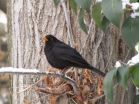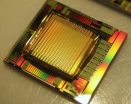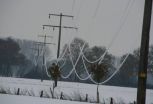(Press-News.org) VIDEO:
This is an example of one image from each of the visual categories used in the structured SSD training (geometric shapes, Hebrew letters, textures, body postures, everyday objects, houses, and...
Click here for more information.
Areas of the brain in blind people can learn to process visual input through the use of sound, even after years or perhaps even lifelong blindness, according to new research reported in the November issue of the Cell Press journal Neuron. The findings challenge the common belief that if the visual cortex of the brain is deprived of information in early life, it may never develop functional specialization.
"The adult brain is more flexible that we thought," says senior author Prof.. Amir Amedi, of the Edmond and Lily Safra Center for Brain Sciences and the Institute for Medical Research Israel-Canada at the Hebrew University Medical School.
In their studies, Prof. Amedi and his colleagues taught congenitally blind adults to use sensory substitution devices (SSDs), which are non-invasive sensory aids that provide visual information to the blind via their existing senses. For example, when a person uses a visual-to-auditory SSD, images from a video camera are converted into "soundscapes" that represent the images, allowing the user to listen to and then interpret the visual information coming from the camera (i.e. "seeing" with sounds).
After being taught how to use the SSDs, blind people could use the devices to learn to read, with sounds representing visual images of letters. This skill involved a region of the brain called the Visual Word Form Area (VWFA), which in sighted people is activated by seeing and reading letters. After only tens of hours of training, blind people's VWFA also showed more activation for letters than for any of the other visual categories tested. The findings suggest that, at least in the blind, the tuning of VWFA to reading does not depend on vision. Instead, the VWFA may be selective to the type of information or computation rather than to the type of sensory input.
VIDEO:
After the training program, participants could assign soundscapes to their visual categories and also determine multiple features of the stimulus (such as hairstyle in a face image, number of floors...
Click here for more information.
Blind people could also use SSDs to recognize soundscapes of visually complex categories such as faces, houses, and body parts. The results suggest that distinguishing meaningful shapes does not require vision, even though the brain activity that's needed to do so takes place in the part of the brain normally associated with vision in sighted individuals.
The findings also give hope that reintroduced input into the visual centers of the blind brain could potentially restore complex vision, and that SSDs might be useful for visual rehabilitation. "SSDs might help blind or visually-impaired individuals learn to process complex images, as done in this study, or they might be used as sensory interpreters that provide high-resolution supportive synchronous input to a visual signal arriving from an external device," says Professor Amedi.
### END
Teaching the blind to read and recognize objects with sounds
2012-11-07
ELSE PRESS RELEASES FROM THIS DATE:
Looking for the anti-Alzheimer's molecule -- A new approach to treating a devastating disease
2012-11-07
Ottawa, Canada (November 7, 2012) – Researchers at Dalhousie University have discovered a new technique using "computer-aided" drug design that may lead to an entirely new approach in the treatment of Alzheimer's disease (AD).
"Alzheimer's is a devastating disease for which no truly disease-modifying drugs are available. Our approach is completely novel. We explore how the human body attempts to protect itself from Alzheimer's, and then we exploit this to develop an entirely new approach to therapeutics," explained Dr. Weaver, a professor at Dalhousie University, ...
Geologist calls for advances in restoration sedimentology
2012-11-07
BLOOMINGTON, Ind. -- Rapid advances in the new and developing field of restoration sedimentology will be needed to protect the world's river deltas from an array of threats, Indiana University Bloomington geologist Douglas A. Edmonds writes in the journal Nature Geoscience.
The commentary, published this week in the November issue, addresses the fact that land is disappearing from river deltas at alarming rates. And deltas are extraordinarily important: They are ecologically rich and productive, and they are home to about 10 percent of the world's population.
"There's ...
In the digital age, managers can't ignore #angrycustomers
2012-11-07
CHESTNUT HILL, MA (November 7, 2012) – In a digital age where dissatisfied consumers vent their concerns through biting viral videos, nasty blog posts or negative online comments, managers need to develop strategies to soothe angry customers in person as well as online, according to a new study in the latest edition of the Journal of Service Research.
In a study that explores the changing ways in which customers express their emotions, the researchers found that anger can quickly fuel negative word-of-mouth commentary to fellow consumers, family and friends, as well as ...
Protein reveals diabetes risk many years in advance
2012-11-07
When a patient is diagnosed with type 2 diabetes, the disease has usually already progressed over several years and damage to areas such as blood vessels and eyes has already taken place. To find a test that indicates who is at risk at an early stage would be valuable, as it would enable preventive treatment to be put in place.
Researchers at Lund University have now identified a promising candidate for a test of this kind. The findings have been published in the journal Cell Metabolism.
"We have shown that individuals who have above-average levels of a protein called ...
Persistent sync for neurons
2012-11-07
A team of Brazilian physicists working with neuroscientists studying freely behaving rats have found that their neurons often act in precise coordination over time, in a study about to be published in EPJ B. These findings stem from the work of Bruno Silva, a researcher at Bahia Federal University in Salvador, and his colleagues from other universities in the Northeastern region of Brazil, and suggest that neuronal networks' memory could be explored in the future.
Because neurons are connected with each other, acting as operational units in the brain, they can be considered ...
City birds adapt to their new predators
2012-11-07
Faced with the same threat, city and country birds do not react in the same way despite being from the same species. According to a new study, urban birds have changed their anti-predator behaviour in new environments.
When a bird is faced with a predator, its only objective is to escape. However, city birds do not react in the same way as their countryside counterparts, despite being from the same species. Urbanisation plays an influential role in their survival strategies.
To study this phenomenon, Juan Diego Ibáñez-Álamo, researcher at the University of Granada ...
Ultrasensitive photon hunter
2012-11-07
Fast and ultrasensitive optical systems are gaining increasing significance and are being used in a diverse range of applications, for example, in imaging procedures in the fields of medicine and biology, in astronomy and in safety engineering for the automotive industry. Frequently the challenge lies in being able to record high-quality images under extremely low light conditions. Modern photo detectors for image capture typically reach their limits here. They frequently work with light-sensitive electronic components that are based on CMOS (Complementary Metal Oxide ...
Dealing with power outages more efficiently
2012-11-07
Power supply is the backbone of our modern economy. Nearly every aspect of life depends on electrically-operated devices. When the flow of power stops, it is not just the lights that go out. In the supermarket, the automatic teller machines and cash registers stop working. Even telephones, radios and televisions become paralyzed. If the shortage lasts a long time the supply of hot water, gas and fuel and the functioning of respirators at intensive care units in nursing homes or at private homes is at risk.
The causes of this dreadful scenario can range from natural disasters ...
Activating the 'mind's eye' -- sounds, instead of eyesight can be alternative vision
2012-11-07
Jerusalem, Nov. 7, 2012 -- Common wisdom has it that if the visual cortex in the brain is deprived of visual information in early infanthood, it may never develop properly its functional specialization, making sight restoration later in life almost impossible.
Scientists at the Hebrew University of Jerusalem and in France have now shown that blind people – using specialized photographic and sound equipment – can actually "see" and describe objects and even identify letters and words.
The new study by a team of researchers, led by Prof. Amir Amedi of the Edmond and ...
Protected areas in East Africa may not be conserving iconic plants
2012-11-07
A new study led by researchers from the University of York suggests protected areas in East Africa are not conserving plants such as the iconic Acacia tree.
Acacia, the thorny flat-topped tree that characterises the African savannas, is an important component of ecosystem diversity. However, the researchers found that the majority of Acacia biodiversity 'hotspots' receive little protection through the protected area network, which includes national parks, nature and forest reserves. The situation, they say, may be exacerbated by climate change.
The results of the study, ...




